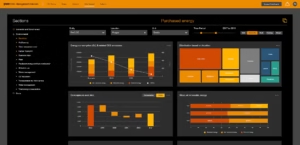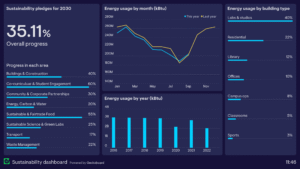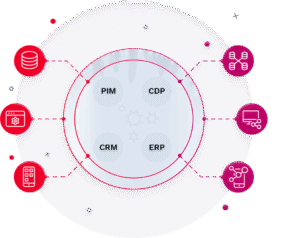BI is part of the digital transformation that enables companies to operate in an increasingly competitive environment. However, not all companies take advantage of this technology to gain valuable information and make decisions that drive growth and sustainability.
Discover through this article how implementing Business Intelligence can boost decision making in the company and take it to the next level.
As with any type of technology that you want to incorporate into your company, implementing Business Intelligence requires first defining a strategy. As data has become the main factor that allows companies to make decisions, many organizations start from the wrong decision when implementing a data strategy.
It is common, for example, to confuse terms such as Big Data and Business Intelligence. And although both concepts have common characteristics, it is necessary to know that while Big Data focuses on large-scale data management, Business Intelligence in companies uses structured and processed data to generate business reports, data dashboards and analysis that enable concrete actions to be taken. There is also a tendency to confuse Business Intelligence and Business Analytics, so distinguishing the benefits of each technology will be the first step to take advantage of them.
Define objectives and needs
Once the concepts of the different technologies that surround the world of business data analysis are clear, it is necessary to set the objectives to be achieved when implementing different Business Intelligence tools. First of all, it is necessary to know that the implementation of BI systems not only implies the adoption of different technological solutions such as aggity’s Analytics platform, but also the creation of a company culture that uses information proactively.

Therefore, the first step to achieve a successful implementation aimed at improving business efficiency is to define the objectives to be achieved with the main Business Intelligence applications, identifying the key areas of improvement where BI can bring more value. What is to be achieved? Process optimization? Improved data-driven decision making? Perhaps an improvement in efficiency? These are just some of the questions that must be answered in order for the objectives to be perfectly defined.
Selecting the right tool
Perhaps one of the most difficult points when implementing Business Intelligence is to choose the right tool, given the large number of solutions that can be found in the market. There are several factors that will influence the choice of one tool or another. The first of these seems clear: that the solution is in line with the established objectives.
It is also important to evaluate the scalability of BI toolsThe volume of data will grow, and the analytical capabilities of solutions that will allow users to access and analyze data will increase. explore data effectively and discover patterns that translates into a improvement of business efficiency. Having a specialized partner like aggity will make the choice much easier.
Collect and prepare data
The success of any BI solution will always depend on the quality of the data a company has: the higher the quality, the better the business intelligence. It is therefore necessary to collect the most accurate data from both external and internal sources. Moreover, it is not enough just to have a large amount of data, but it is necessary to prepare it, which includes cleaning, transforming and structuring it in a suitable way for subsequent analysis.

The importance of dashboards and panels
Once the data is completely clean, the company can start developing panels and dashboards that, among other things, will enable real-time data analysis. Both need to be intuitive and provide valuable and easy-to-understand information to help accelerate decision making.





